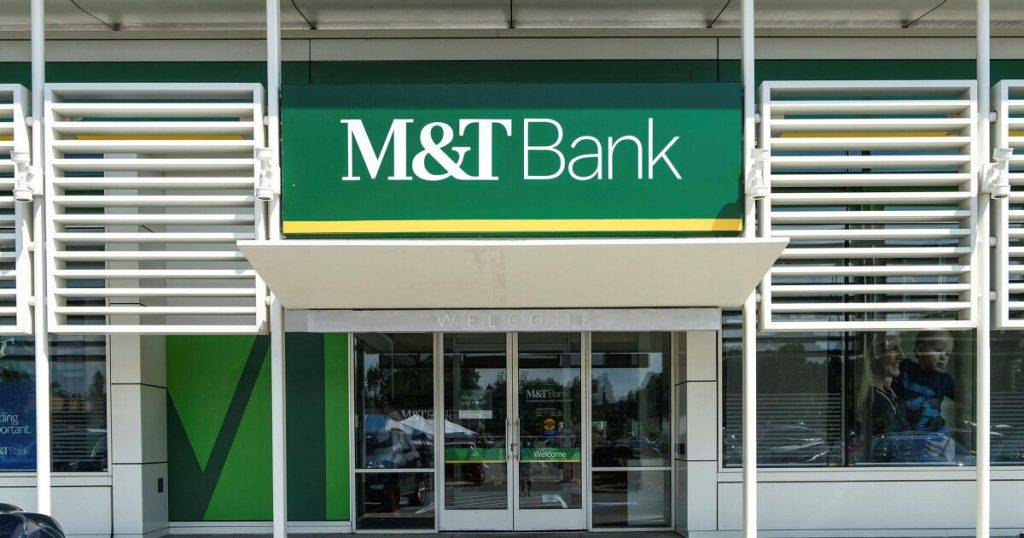- Key insight: Commercial real estate loan exposure has been a headache for many banks in recent years, as office property values flailed and interest rates rapidly rose in 2022 and 2023.
- Supporting data: The bank’s approval rates for commercial real estate loans have doubled compared with recent quarters, said the company’s chief financial officer.
- Forward look: M&T is eyeing a potential turning point in the first quarter of 2026, anticipating that CRE loan growth will resume around that time.
The Buffalo, New York-based company is beginning to log a rebound in commercial real estate loan production, Chief Financial Officer Daryl Bible said Thursday during
“I think the momentum is growing, and we’re having a lot more success and a lot more wins and seeing more loans on the books,” Bible said.
The company pulled in net income of $792 million, or $4.82 of diluted earnings per common share, in the third quarter, beating consensus analyst estimates of $4.43.
Following years of working to pare down its CRE lending portfolio, an asset class that was a bane of the banking industry in recent years,
During the third quarter, CRE loans at
But Bible said
Bible said the loan origination environment has remained competitive. Loan spreads at
Consumer and residential real estate loans each rose by 3% during the third quarter. Commercial and industrial borrowing was up 1%, driven by the finance and insurance sectors.
The bank also saw gains in a trendy lending business that has been on the risk watchlist of federal regulators, JPMorganChase CEO Jamie Dimon and other industry participants.
Lending to non-depository financial institutions has exploded at banks in recent years. In roughly the first half of 2025, loans to nonbanks drove about half of all bank loan growth, according to a study by Truist Securities.
Loans to non-depository financial institutions make up about 8% of
The company is also one of the top Small Business Administration lenders by volume, Bible said, but the government shutdown has for now put a pin in SBA business.
Bible said that the tax legislation passed this summer “removed one source of uncertainty. and gave businesses more incentive to invest in new capital.” But despite stronger consumer spending and businesses’ strategic planning,
“Although overall economic activity was resilient, we remain attuned to the risk of the slowdown in coming quarters due to the weakening labor market,” Bible said. “The possibility of declining jobs or the rise in the unemployment rate would likely cause weaknesses in consumer spending and possibly business [capital expenditures] too.”
Acquisition prospects
“Our strategy is really to continue to grow share and customers in the markets that we serve,” Bible said. “So I’m sure an acquisition will come at some point down the road, I’m not sure when that’s going to be.”
Merger and acquisition activity among banks has been on a tear in 2025, particularly in recent months, after a years-long slowdown.

